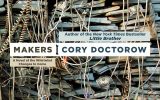If you enjoy reading Electric Literature, sign up for our mailing list! We send you the best from EL every week, and you will be the first to know about upcoming submission periods and virtual events.
Publishers are making books and selling them to readers. And yet, for some reason, we are not going to talk about the latter. Most literary writers consider the sale of books as a semi / very mythological subject that is taboo to discuss.
Most literary writers consider the sale of books as a semi / very mythological subject that is taboo to discuss.
While writers avoid the subject, the media occasionally brings book sales – usually to either announce the novel’s death again or to make extensive generalizations about the attention of different generations. But even then, the data we get is almost useless to anyone interested in fiction and literature. Earlier this year, there was a round of tense editorial articles about how printing is back, baby after reports from the industry showed that print sales increased for the second year in a row. However, the growth was driven almost exclusively by non-fiction sales … more specifically, adult coloring books and YouTube celebrity memoirs. As large as adult coloring books can be, the sales figures tell them nothing about the sale of e.g. Literary fiction. \
This lack of knowledge leads to a lot of confusion for the authors when selling a book. Do they sell well? What constitutes good sales? Should they start freaking out when their first $ 0.00 royalty check comes in? Authors should definitely write with an eye towards art, not markets. Thinking about sales while creating art rarely pays off. But I am still naive enough to believe that knowledge is always better than ignorance, and that the authors, after the book was written, should be published with a basic understanding of what is happening. Personally, my knowledge of basic publishing did not even help me think or worry about book sales when my own book was published last year. And since I need a reason to justify the time I spent around BookScan, here’s my guide to everything you wanted to know about book * sales (but was afraid to ask).
* Because “books” is an impossibly large category that covers everything from Sudoku puzzles to C ++ guides, I will focus on traditionally published fiction books in this article.
THE FUNDAMENTAL
What is a book offer?
Wait, you say, everyone knows what a book sale is. Ah, yes, but what this part assumes is … maybe you do not? In fact, one of the things that makes the conversation about book sales so confusing is that several different issues are thrown up, and often people in the publishing industry confuse them completely. Here are four different numbers that are often collected:
1) Number of copies of the book printed.
2) Number of copies sent to shops or other markets such as libraries.
3) Number of copies sold to readers.
4) Nielsen BookScan number.
These numbers can all be very different. It is not at all uncommon for a publisher e.g. Prints 5,000 copies, but sells only 3,000 copies to bookstores / other markets, of which 2000 copies are actually sold to customers. In the meantime, BookScan is showing 600 sold copies. And we have not even gotten into e-books yet (more on that later).
What is the actual number of books sold? Well … basically a combination of 2 and 3 plus e-book and audiobook sales. A publisher sells books to retailers such as bookstores, but also to some institutions such as libraries. However, dealers are usually (but not always) entitled to return unsold copies. So some copies that are “sold” eventually go unsold. (In copyright statements, a certain amount is always withheld as a “reserve against return”.)
What is BookScan and why should we break it?
In my hypothetical headline, the Nielsen BookScan number is the least accurate. It is farthest from the “true” sale of the book. And yet, if you are reading articles on book sales, this is exactly the BookScan number you want to see. This is because while publishers and authors (via royalty statements) have access to the real numbers, they are almost never released to the public or to rival publishers. Fortunately, it is Nielsen BookScan, an industry tracking tool that registers point of sale based on ISBNs. (Yes, this is the same Nielsen as the TV’s Nielsen rankings.) People in publishing can use BookScan to get a general sense of what books sell, the health of the industry, or tear their hair out of frustration as they watch the sale of rivals.


